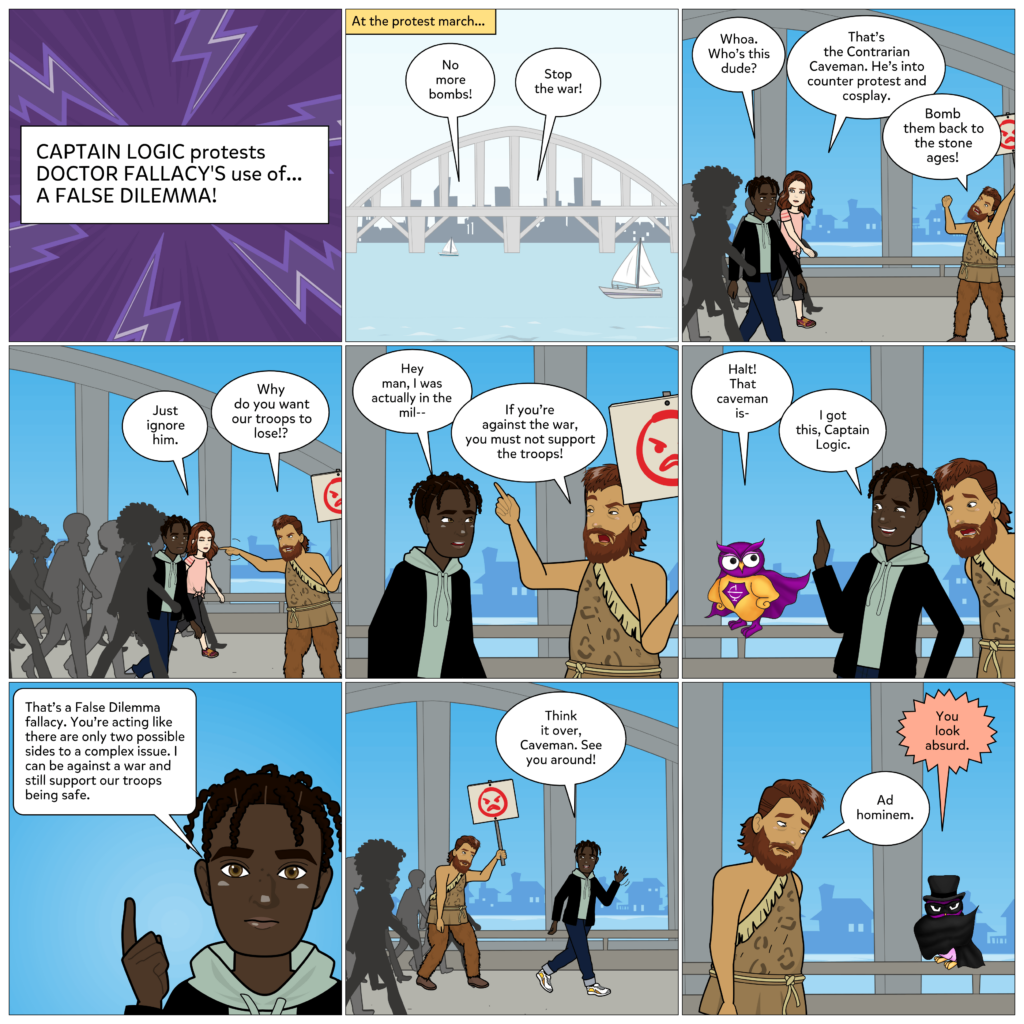Sometimes called the “either-or” fallacy, a false dilemma is a logical fallacy that presents only two options or sides to an issue when there are actually more complexities. Essentially, a false dilemma presents a “black and white” kind of thinking when there are many shades of gray.
The simplest form of a false dilemma would be a question like: “do you want ketchup or mustard on your hot dog?” Why not both? Or neither? Or maybe a salad? We probably encounter these harmless false dilemmas often in everyday life. Sometimes, simplifying the number of choices available can even be a useful way to reach a consensus.
However, false dilemmas can become harmful when they’re used to purposely exclude options in order to distort an argument. False dilemmas can also be used to imply that two contrasting positions are actually contradictory. We’ll see an example of that in our comic below:

For a screen reader compatible slideshow version of the comic, please click through the below images:
In our comic, you’ll notice how a false dilemma is used to turn two contrasting positions into an either-or binary. This can be done to head-off debate about the issue at hand. The topic being discussed in our comic is a war, but the protestor could easily be sucked into defending whether or not he supports the troops. A false dilemma can shift the terms of a debate, much in the same way as a straw man fallacy.
So much of human language is based on opposites and either-or statements. It’s early or late, it’s raining or it’s sunny, you’re happy or you’re sad. Because we’re so predisposed to these types of constructions, it can be very easy to fall into false dilemmas without even realizing it. Remember that sound logic means analyzing a situation from all angles and being aware that there is often more nuance than simply for or against.
